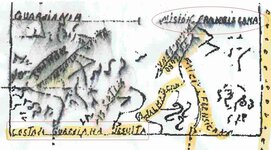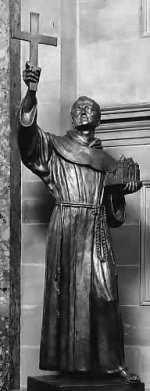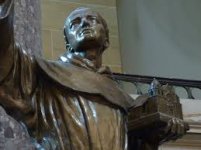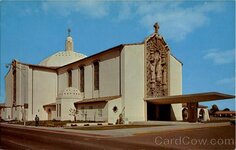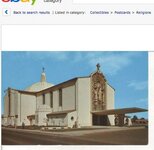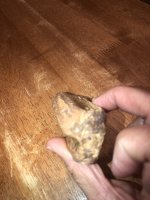Oroblanco
Gold Member
- Jan 21, 2005
- 7,838
- 9,830
- Detector(s) used
- Tesoro Lobo Supertraq, (95%) Garrett Scorpion (5%)
Mike where in heck have you been, too busy digging up GOLD amigo? 
One point I think we disagree on (respectfully) are those bars. I don't think they make or break the case. Some may be fakes, which the skeptics assume are the whole story, which is hardly the case. The problem is that if they are genuine, they don't prove the Jesuits were mining nor had amassed large treasures, for they could be the proceeds from their many other commercial endeavors or from tithes from the 'faithful'.
The statue we have been debating is a puzzle (to me) for as Deducer put it, if it were intended to represent Serra from the beginning, we should be able to determine that. Also it is notably different from other statues of Serra, and it is odd that they would erect a statue to a Franciscan, famed for his establishing nine missions in California, not Arizona, beside a Jesuit, beneath a Jesuit and the Jesuit coat of arms. It makes no sense to me. Jim Hatt has been cited on this statue, and he did post this concerning the statue story some years ago:
I would like to see more to establish the facts about this statue, one way or the other.
Oroblanco

One point I think we disagree on (respectfully) are those bars. I don't think they make or break the case. Some may be fakes, which the skeptics assume are the whole story, which is hardly the case. The problem is that if they are genuine, they don't prove the Jesuits were mining nor had amassed large treasures, for they could be the proceeds from their many other commercial endeavors or from tithes from the 'faithful'.
The statue we have been debating is a puzzle (to me) for as Deducer put it, if it were intended to represent Serra from the beginning, we should be able to determine that. Also it is notably different from other statues of Serra, and it is odd that they would erect a statue to a Franciscan, famed for his establishing nine missions in California, not Arizona, beside a Jesuit, beneath a Jesuit and the Jesuit coat of arms. It makes no sense to me. Jim Hatt has been cited on this statue, and he did post this concerning the statue story some years ago:
Legends and Lore or actual history? Your guess is as good as mine.
I would like to see more to establish the facts about this statue, one way or the other.
Oroblanco



